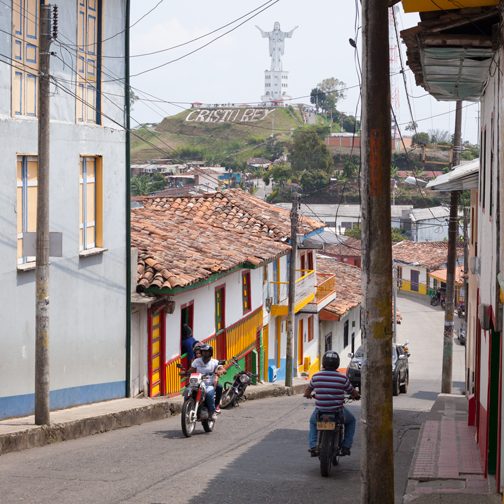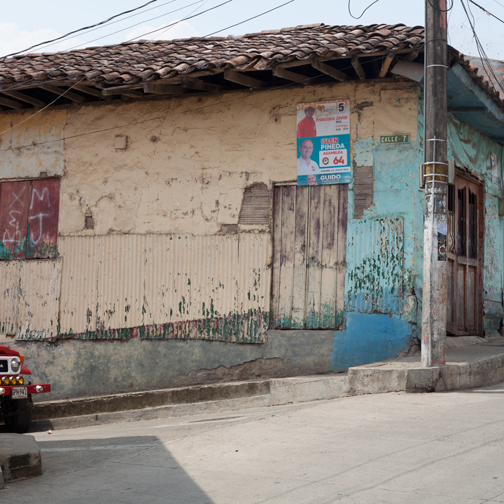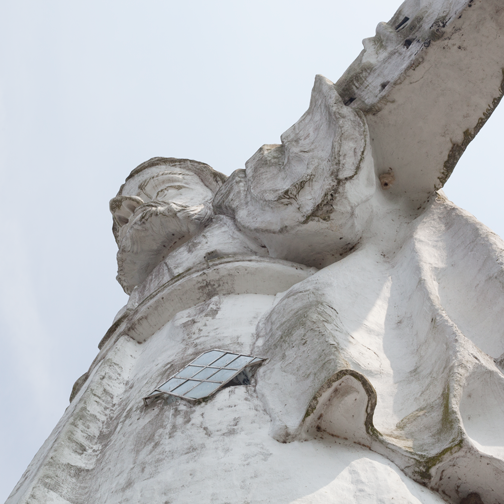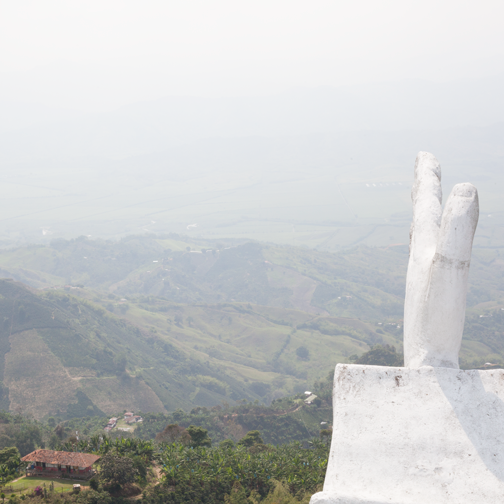
It is not easy to find information online about Parque los Nevados. Most sites direct people to day tours or overnight packages and it also doesn’t help that it’s such a large park with multiple entrances.
After talking to a lot of people I realized that a guide is only needed to access some parts of the northernmost area around the very active Nevado del Ruiz. However, guides are not required for the rest of the park, so I decided to head further south.

I organized a jeep to meet my friends and I at 7am in Villa Maria. This is a neighborhood at the end of the cable car line in Manizales. The 2.5 hour drive to Potosí wound through farm land and green fields. The difference in altitude was marked by a transition from succulent red flowers to white daisies.

Most jeeps head all the way up to Potosí, but Carlos must have had a deal with the occupants of Hospedaje El Bosque. He unloaded our luggage and then ran in for a quick meal before heading back down to Villa Maria. A fluffy rooster walked past the front door while the sugary smell of panela floated out from the kitchen.
We ordered breakfast and sat down in a small dining room with a TV playing in the corner. A crisp breeze blew in through the window. The landscape made me think of The Sound of Music; the telenovela in the corner reminded me I was in Colombia.

From Hospedaje el Bosque, the walk uphill to the Potosí park entrance was about 1.5 hours. It was so tranquil that the wind blowing over the mountains sounded like a distant river. When I stopped to open a snack, the plastic bag sounded like a jumbo jet passing overhead.
The park stops admitting visitors after 1pm. Luckily we made it there within minutes of closing time. The good news was that with our Colombian cédulas we received the locals’ rate – 9,500 pesos. Foreigners without this card have to pay 27,000 pesos. There was no extra fee for camping.
The bad news was that our destination, El Cisne, had been closed for about 5 years. That was really confusing because I knew I’d looked up the hotel and camping rates on their website within the last six months. I’m certain of that!

We changed our destination to a campsite at Laguna del Otún. It was a 4.5 hour hike that I had not been expecting. We were all also coming to terms with the scant amount of food we brought because our original destination, El Cisne, would have had a restaurant. My backpack was filled with wine instead of carbs and protein.

I was definitely feeling the páramo altitude and the blisters that were starting to form on my feet. The sun was bright and I later realized that I had covered everything except for the backs of my hands. Every now and then we heard a rumble on the trail and jumped out of the way just in time for a group a packhorses to pass.

Halfway through the hike we reached the highest point of the trail, which overlooked Laguna del Otún. Golden grasses lined the slope down to the lakefront. Off in the distance a single cascade coursed down the steep rock face.

We were at about 3,950 meters when further along the path we passed through a field of frailejones. A light afternoon shower began and in the process created a double rainbow over the lake.
For dinner we found a small BBQ grill and seven of us split half a loaf of bread, a package of sliced something, and two bottles of wine. We went to bed when the frigid winds were too much too handle. Our sleeping bags were warm, but the wind continued playing with out tent all night.

The next morning we relaxed around the campsite. Some people hiked uphill for a view of Santa Isabel. My blisters were too painful, so I chose a level walk around the north end of Laguna del Otún. At one point I came across a hill with a series of sulphur vents.
Because we were down to very little food, we decided not to camp a second night. We walked back and stayed at the Parquedero in Potosí. It was a basic building with a layout similar to a tiny motel. The guest rooms were completely empty of furniture and the communal bathroom didn’t have a faucet. The toilet handle was a rough green string.
The only place to wash hands was in the warm kitchen, where all the locals congregated on benches along the wall. They served us caldo, arepas and dark, dark agua panela for 4,000 pesos. For dinner we ate eggs, rice, a buttery arepa and hot chocolate for 6,000 pesos.

Now that we were finally full, we headed out back where we had pitched our tents. The moon was so bright it was like a spotlight. My sharply outlined silhouette stretched across the paddock grass.
The following morning, the family who ran the Parquedero was already cooking by the time I woke up. The radio was on and the benches that lined the wall were filled. I sat on a grassy slope outside and watched thick white ash blow out of a vent on the kitchen roof.
Home is where the hearth is. I wondered if there was a Spanish equivalent for that.






































